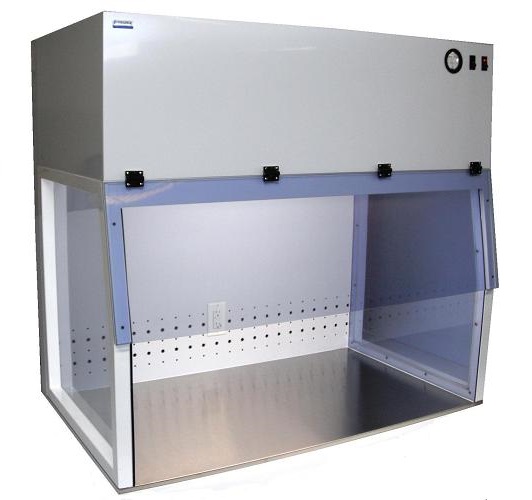A laminar flow cabinet is an important equipment in many industries. It’s primarily used in sectors that have to deal with sensitive substances or that may need a contamination free environment. It’s a special type of workbench that is designed to be free from foreign particles and contamination. These hoods have a High Efficiency Particulate Air (HEPA) filter attached to them which filters the regular air and passes pure air onto the workbench. As the name suggests, the filtered air in this equipment blows in a smooth laminar flow. These are most commonly found in facilities like semiconductor manufacturing plants, pharmacies and research labs.
Laminar flow hoods are available in two different configurations – horizontal and vertical. They both perform the same function, but the difference in their setup makes them suitable for different settings. The primary differences between Horizontal and Laminar Flow hoods are explained below.
Horizontal Laminar Flow Hoods
These hoods have the filter or fan placed at the rear of the workstation, and so the air flows in a horizontal direction. The filter pulls in air from the rear side of the unit and pushes it towards the front. Since the air flows parallel to the sides of the bench, so there is little to no turbulence in this configuration. The pros and cons of this type of setting are listed below:
Pros
– The horizontal flow ensures that most particles in the air are blown out of the unit effectively.
– There is low possibility of turbulence
– They can fit well in areas where the height of the room is less.
Cons
– Since the air flows horizontally, so the contaminated particles are most likely to hit the operator directly. Thus, they are not suitable for units that deal with somewhat toxic materials.
– Using bigger equipments and tools in a horizontal laminar flow hood will create turbulence.
– They need more space for installation due to the presence of filter at the back of the unit.
Vertical Laminar Flow Hood
The vertical laminar flow hoods have the fan or filter attached to the top of the unit. The air is pulled in by the filters from the top and pushed towards the bottom. Since the fans are placed at the top, so these units can easily fit in areas that are low in space. The pros and cons of vertical laminar flow hoods are listed below:
Pros
– Since the fan is adjusted at the top of the unit, so they are more compact and suitable for smaller floor space as well
– Larger tools and equipments can be used in vertical flow hoods without much turbulence being created.
– The contaminated air is not pushed directly onto the operator, as the air is flowing downwards.
Cons
– As compared to horizontal flow hoods, there is more turbulence in vertical units since the air collides with the base of the workbench.
– Replacing the filter can be a bit more difficult as compared to horizontal units.
– It may not be easy to install them in a room that is short in height.
It is essential to consider the benefits and drawbacks of both the horizontal and laminar flow hoods in order to decide which one is suitable for your settings.

